Showing 971–980 of 1173 results
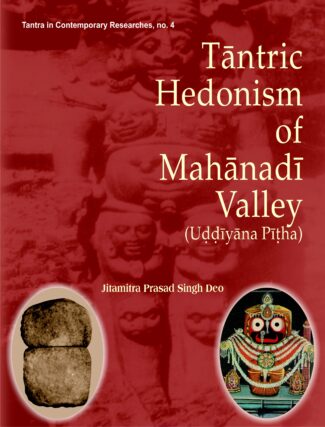
It is the study of the yogic developments in the Mahanadi Valley which evolved erotic mysticism and examines the evolution of Tantric Cults. With numerous illustrations, it emphasises on the art and architectural expressions of tantric belief. Furthermore the concept of sex to super-consciousness has been described in detail.
This is a brilliant cultural-anthropological study exploring those hedonistic aspects of the pan-Indian heritage which, represented by centuries of the non-Vedic, Tantric tradition, affirm that the pleasurable, especially the sexually pleasurable, is natural as a means to achieve the highest mystical experience. Himself a Tantric initiate, Prem Saran offers a compelling, sympathetic analysis of Tantrism, its place in the Bengali and Assamese cultures, and its pervasiveness in pan-Indian thought and ritual generally. Prem Sarans is also a cultural critique of modern Indian values and life-ways. In addition, it is an exercise in methodology, employing certain anthropological tools and concepts like “Cultural Debate”, “Cultural Criticism”, “Hindu Renaissance” and “Pizza-effect” the last three having been developed by the late Professor Agehananda Bharati whom the author acknowledges as a “constant source of encouragement” during the last decade. Though tantra is juxtaposed to Vedic traditions as a heterodox, life-affirming tradition, which is both ancient and basic to Hindu interpretations of being, its hedonistic contents have been purposely neglected or suppressed, partly because of the continuing hold of Victorian morality (imbibed from the British missionaries and colonial rulers), and partly because the erotic route to mystical achievement has always been a secret, minority path. Tantra: Hedonism in Indian Culture will, therefore, fill an existing lacuna in the cultural-anthropology of South Asia. The book carries a Foreword by the distinguished anthropologist, Professor Mattison Mines of the University of California, Santa Barbara, USA.
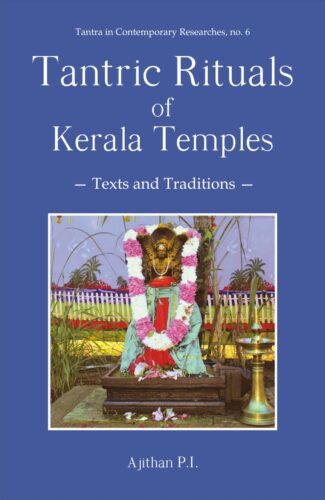
This volume presents an in-depth study of a distinct temple ritual cult of Kerala, a tradition deeply rooted within the Vedic ritualistic fold and characterized by Smarta-Pauranika beliefs and customs, which still remains to be a less explored subject, and its present institutionalized structure.
Kerala Tantra is a regional phenomenon, which is an offshoot or synthesis of Saiddhantika and Pancaratra tantric ritual rites. It is a tradition deeply rooted within the Vedic ritualistic fold and characterized by Smarta-Pauranika beliefs and customs.
This volume is a general, but a serious and in-depth study of distinct temple ritual cult of Kerala. Kerala Tantra still remains to be a less explored subject. There is no exclusive study on the ritual peculiarities of Kerala Tantra. This book focuses on filling that gap covering extensively the prominent characteristics of the unique ritual cult of Kerala.
The data presented in the book are based on many unpublished and less-known, but authentic manuscripts of late medieval period, and interviews with previous and current generations of tantrins and their testimonies. It covers the great traditions of Tantra, Kerala Tantra, and transmission of tantric knowledge through formal and informal methods. It also talks about the institutionalization of Tantric education, taking a cue from the context of Vedic and Sanskrit education of Kerala.
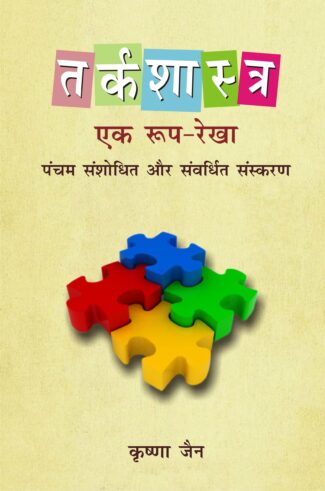
The present book is the fourth enlarged edition of the earlier book Tarkasastra Ek Roop Rekha. The current edition includes an additional chapter on Uses of Language and its Functions. Like the earlier book, the present book sets forth the principles and procedures of elementary Logic in the most simplified way and is specifically designed and intended for the use of undergraduate students. It contains almost all the main topics on Deductive, Inductive and Symbolic Logic prescribed in the syllabi of different universities in the country.
The present book is the fourth enlarged edition of the earlier book A Text Book of Logic-An Introduction. The current edition includes an additional chapter on Uses of Language and its Functions. Like the earlier book, the present book sets forth the principles and procedures of elementary Logic in the most simplified way and is specifically designed and intended for the use of undergraduate students. It contains almost all the main topics on Deductive, Inductive and Symbolic Logic prescribed in the syllabi of different universities in the country. The book attempts to present a clear perspective on Logic as a science of correct reasoning. In the introductory chapter the aim of Logic and the task of a Logician are elaborated. Other topics covered here are Terms, Propositions, Immediate Inference, Syllogism, Boolean Equations, Venn Diagrams, Anti-Logism Theorem, Truth Functions, Truth Table, Deductive Method, Predicate Calculus, Scientific Inductions, Causation, Mill’s Methods and Informal Fallacies to mention a few. All the topics are explained with the help of diagrams and lucid examples. Each chapter is followed by plenty of exercises for the benefit of students.

Twelve authentic papers six in Hindi and six in English as part of the Tattvabodha series deal with varied subjects of India’s knowledge system. These papers are from well-known experts and can be of great interest to students, researchers and scholars of Indology.
The National Mission for Manuscripts was established in February 2003 by the Ministry of Culture, Government of India with the purpose of locating, documenting, preserving and disseminating the knowledge content of India’s handwritten manuscripts, said to be the largest collection of handwritten knowledge documents in the world. While looking ahead to reconnect with the knowledge of the past, the Mission is in the process of trying to re-contextualize the knowledge contained in manuscripts for the present and the future generations.
The Mission launched a lecture series titled ßTattvabodhaû in January 2005. Since then, a monthly lecture series is organized in Delhi and other academic centres all over the country. Tattvabodha has established itself as a forum for intellectual discourse, debate and discussion. Eminent scholars representing different aspects of India’s knowledge systems have addressed and interacted with highly receptive audiences over the course of the past few years.
The present volume, fourth in this series, comprises 12 lectures delivered under Tattvabodha lectures series. A glance at the list of contributors will reveal that the Mission has had the privilege of hosting the finest exponents of Indian culture and the compilation of their lectures makes for invaluable literature.
These well-researched papers talk about ancient texts like the lost texts of the Vishishtadvaita philosophy, the Kalpagamasamgraha written by Aryadasa which is a commentary on Vedic text, and the manuscripts on the Natyashastra and its text. The lucidly presented studies include an interesting textual criticism and critical reading of the text Abhijnanashakuntala by Kalidasa. They examine concepts such as that of Vak with special reference to Bhartrihari that involves a detailed scrutiny of the concept as understood in the Vedas and till Bhartrihari’s time, and the Advaita concept as available in Vedic hymns. They deal with the problems involved in editing texts on astrology and manuscripts on music. They include a survey of the manuscripts available in the Himalayan region. A study on original Persian sources to throw light on the India of the past comes in as an attempt to highlight significance of using original sources to understand Indian history.
The volume, covering wide-ranging subjects penned by experts in various fields, will surely interest scholars and students of Indology.
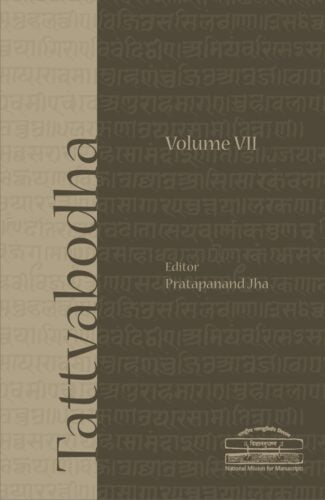
This volume, seventh in the series, consists of twelve papers eleven in English and one in Hindi presented by scholars of high repute in different Tattvabodha lectures organized by the National Mission for Manuscripts, presenting varied topics across Indian knowledge system.
The National Mission for Manuscripts was established in February 2003 by the Ministry of Culture, Government of India with the purpose of locating, documenting, preserving and disseminating the knowledge content of India’s handwritten manuscripts, said to be the largest collection of handwritten knowledge documents in the world. While looking ahead to reconnect with the knowledge of the past, the Mission is in the process of trying to re-contextualize the knowledge contained in manuscripts for the present and the future generations.
The Mission launched a lecture series titled Tattvabodha in January 2005. Since then, a monthly lecture series is organized in Delhi and other academic centres all over the country. Tattvabodha has established itself as a forum for intellectual discourse, debate and discussion. Eminent scholars representing different aspects of India’s knowledge systems have addressed and interacted with highly receptive audiences over the course of the past few years.
This volume, seventh in the series, consists of twelve papers Þ eleven in English and one in Hindi presented by well-known and upcoming scholars in different Tattvabodha lectures organized by the Mission.
The volume finds its merit in varied subjects across Indian knowledge system such as Accessing Manuscripts in the Digital Age; Physics in Ancient Indian Knowledge System; Critical and Comparative Review of the Principal Upanishads; The Concept of Shiva in Shiva-rahasya; The Ramacaritam of Ciraman; Editing of Ayurvedic Manuscripts; The Dravyanamakara Nighantu; Tribal Heritage and Indigenous Philosophical Wisdom of Odisha; Glimpses of Archival Manuscripts; Gandhari: A Key Mother Figure of the Mahabharata; Depiction of Indian Culture in Sanskrit Inscriptions of Cambodia; Phasi Katha-Parampara aura Arabyayamini.
The introductions, interpretations, explanations and analyses involved herein should solicit keen interest among academicians, scholars and students of Indology.
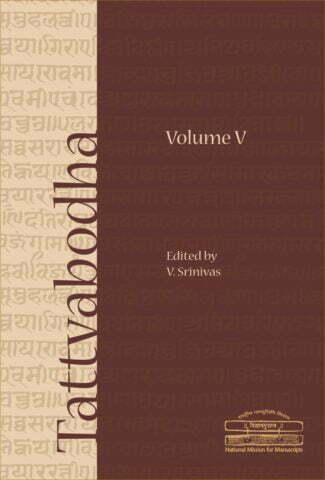
This volume, fifth in the Tattvabodha series, contains eleven papers in English, Hindi and Sanskrit, covering a variety of subjects of Indian knowledge system presented by well-known authors in different Tattvabodha lectures organized by the National Manuscript Mission.
The National Mission for Manuscripts was established in February 2003 by the Ministry of Culture, Government of India with the purpose of locating, documenting, preserving and disseminating the knowledge content of India’s handwritten manuscripts, said to be the largest collection of handwritten knowledge documents in the world. While looking ahead to reconnect with the knowledge of the past, the Mission is in the process of trying to re-contextualize the knowledge contained in manuscripts for the present and the future generations.
The Mission launched a lecture series titled Tattvabodha in January 2005. Since then, a monthly lecture series is organized in Delhi and other academic centres all over the country. Tattvabodha has established itself as a forum for intellectual discourse, debate and discussion. Eminent scholars representing different aspects of India’s knowledge systems have addressed and interacted with highly receptive audiences over the course of the past few years.
This volume, fifth in the series, contains eleven papers presented by well-known authors in different Tattvabodha lectures organized by the Mission. These papers are in English, Hindi and Sanskrit, covering a variety of subjects of Indian knowledge system.
The authors deliberate on topics such as the closeness of the Rigvedic language to the Proto-Indo-European language; different branches of learning in medieval Bengal; unique manuscripts of Asiatic Society; eighteenth-century Calcutta based on the leads from the British Official Records; Sanskrit as the mind of Silk Route; formation of Kashmiri language; a comparative study of Bengali, Hindi and Malayalam Ramayanas; Arabic manuscripts and Arabi-Malayalam literature of Kerala; Bhakti Literature of Rajasthan; manuscripts on Ayurveda; and published and unpublished commentaries of Bhagavata Purana.
These scholarly articles should invoke keen interest among academicians, scholars and students of Indology.
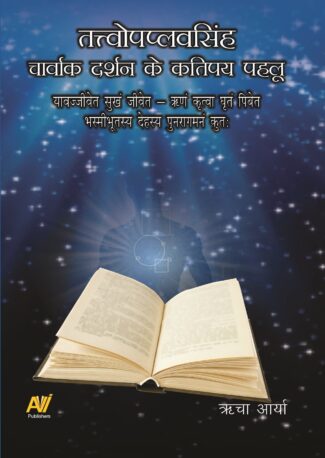
Jayarashibhatta’s Tattvopaplavsimha (ca. 8th cent.) is a work of the Charvak philosophy, which rejects evidence other than the direct evidence. The manuscript of Tattvopaplavisimha was obtained from Patan in 1926. The historical work examines ‘Evidence’ in the light of Indian philosophy. The present book reviews the refutation of various epistemological principles explained in Tattvopaplavsimha.
Jayarashibhatta’s Tattvopaplavsimha (ca. 8th cent.) is considered to be an important work of the Caravaka (Charvak) philosophy. The Charvak philosophy rejects evidence other than the direct evidence, to the extent that it does not consider sky as an element in the five fundamental elements (earth, water, fire, air and sky). The manuscript of Tattvopaplavisimha was obtained from Patan (modern-day Patna) in 1926. It was published in the Oriental Series in 1940 and with an introduction in Hindi by Pandit Sukhlal Sanghvi in 1987. The historical work examines the definitions of the evidence as accepted by various arms of Indian philosophy. The present book reviews the refutation of various epistemological principles explained in Tattvopaplavsimha.जयराशिभट्ट कृत तत्त्वोपप्लवसिंह (आठवीं शताब्दी) चार्वाक दर्शन का ग्रन्थ माना जाता है। चार्वाक दर्शन प्रत्यक्ष प्रमाण के अतिरिक्त सभी प्रमाणों को अस्वीकार करता है, इसके साथ ही प्रत्यक्ष को ही एकमात्र प्रमाण मानने के कारण चार्वाक पंचतत्वों (पृथ्वी, जल, अग्नि, वायु एवं आकाश) में आकाश तत्त्व को नकारता है। तत्त्वोपप्लवसिंह ग्रन्थ की पाण्डुलिपि सन 1926 में पाटन से प्राप्त हुई। सन 1940 में ओरियंटल सीरीज में तथा 1987 में पंडित श्री सुखलाल जी सांघवी की हिंदी भूमिका के साथ प्रकाशित हुआ। यह ग्रन्थ वैतण्डिक पद्धति होने के कारण भारतीय दर्शन के विभिन्न सम्प्रदायों द्वारा स्वीकृत प्रमाणों की परिभाषाओँ और प्रमाण की परीक्षा करता है। प्रस्तुत पुस्तक में तत्त्वोपप्लवसिंह में व्याख्यायित विभिन्न ज्ञानमीमांसीय सिद्धांतों के खंडन की समीक्षा की गयी है।

It is, for the first time, a complete Hindi translation of Bhatta Jairashis Tattvopaplavasimha by the two well-versed scholars of classical Indian Philosophy has been brought about. This translation, with a close hermenutical rendering of the text, provides a convincing structure of skeptical deconstruction of all the major systems of Indian Philosophical thought. Its study leads a reader toward a radical support of Charvaka Ideology by declaring the annihilation of all principles.
We come across variety of fragmented ideas related to the Philosophy of Charvaka in name of Bhutacaitanyavadi, Lokayatika, Akriyavadi and so on. But the Tattvopaplavasimha of Jairashi Bhatta is the only text available in Indian tradition which claims to rediscover the tradition of Brihaspati, supposed to be the founder of Charvaka Philosophy. It is, for the first time, a complete Hindi translation of the Tattvopaplavasimha is brought out by two well-versed scholars of classical Indian Philosophy. This translation, with a close hermeneutical rendering of the text, provides a convincing structure of dialectical as well as sceptical deconstruction of all the major systems of Indian Philosophical thoughts. Its study leads a reader towards a radical support of Charvaka ideology by declaring the annihilation of all principles.
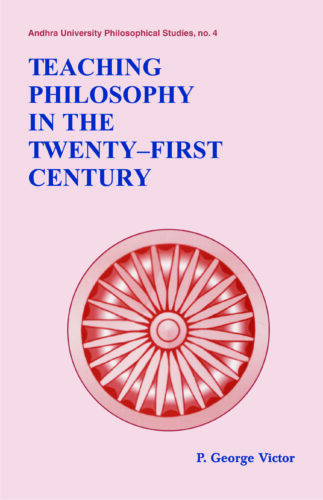
The papers study various aspects of teaching philosophy: its methods, models, techniques and associated problems and prospects. They scrutinize philosophy curriculum in universities and use of computers for teaching it. They discuss ways to popularise philosophy and introduce it at the elementary level in schools.
The relevance of philosophy in the strife torn world of today cannot be undermined: going into the why of ideas, philosophy examines the importance of concepts and ways to cultivate values, and foster them. But its growing unpopularity particularly as a discipline of study warrants specific attention. The book explores an important factor responsible for this the way in which philosophy is taught. The papers, presented at a national seminar sponsored by Indian Council of Philosophical Research, look into various aspects of teaching philosophy: its methods, models, techniques, associated problems and prospects in the coming decades to highlight the nature and relevance of philosophy. They scrutinise the philosophy curriculum in universities today and study the methods of teaching philosophy in ancient India, with their stress on summarising the essence of philosophical doctrines in sutras or aphorisms. Scholars from the West in their thought-provoking analyses present the changing patterns of curriculum and syllabus of philosophy, and the use of computers and science fiction for the purpose. The Indian teachers of philosophy, both old and young, emphasise on acquainting the students with philosophy right from the school level, and teaching philosophy in an entertaining yet edifying manner by presenting life stories of philosophers and teaching through novel methods. They discuss the need to introduce and popularize philosophy among people in general so as to make philosophy a way of life that can usher in moral and spiritual progress in the Twenty-first Century.

This book records the contribution and sacrifice of sixty-seven great Indian women from various walks of life. These short biographical accounts capture in letter and spirit the strength and power of women in various fields like education, music, dance, literature, sports, service, religion and spirituality.
Tejasvini is an inspirational handbook that records the contribution and sacrifice of sixty-seven great Indian women from various walks of life. These short biographical accounts capture in letter and spirit the strength and power of women from eleventh century ce to our present times. This book surveys the role of women in various fields like education, music, dance, literature, sports, service, religion and spirituality that the history has witnessed time and again.
This book also records the supportive role of women during revolutionary periods. The sacrifice of women during renaissance movements and in freedom struggle especially during the Revolt of 1857 is a highly motivating remainder of their bravery and valour. The lives of these women, marked by discipline and strengthened by ethical codes, have made them immortal beings that will serve as the guiding spirit for generations to come. There is a place in this book highlighting the lives of many lesser or unknown warriors, scholars, artists, devotees and others.
This book is expected to inspire young minds, especially the women of modern India.
| There are no products |